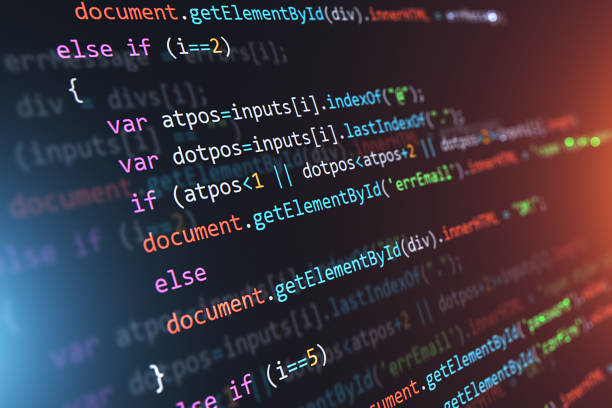Introduction
Constructors and destructors are two fundamental concepts in programming, especially in object-oriented languages like Java. These terms may sound similar, but they serve entirely different purposes. In this blog, we will explore the differences between constructors and destructors, with a special focus on Java. We will also touch on the concept of static blocks in Java, which plays a unique role in the language.
Understanding Constructors
Constructors are special methods in object-oriented programming that are called when an object of a class is created. They have several essential characteristics:
- Initialization: Constructors are primarily used to initialize the state of an object. They set the initial values for an object’s fields or attributes.
- Name Match: A constructor has the same name as the class it belongs to. It doesn’t have a return type, not even `void`. It is automatically invoked when an object is created.
- Overloading: You can define multiple constructors within a class, each with different parameter lists. This allows for constructor overloading, giving you flexibility in creating objects.
- Inheritance: Constructors are inherited in Java, meaning a subclass can call a constructor of its superclass using the `super` keyword.
In Java, constructors are essential for creating and initializing objects. Here’s an example of a simple constructor in Java:
“`java
public class Car {
String brand;
int year;
// Constructor
public Car(String brand, int year) {
this.brand = brand;
this.year = year;
}
}
“`
In this example, the `Car` class has a constructor that takes `brand` and `year` as parameters to initialize the `Car` objects.
Static Blocks in Java
Before we dive into destructors, it’s crucial to understand Static Blocks in Java. These are not directly related to constructors or destructors, but they play a unique role in class initialization.
Static blocks are executed when a class is loaded into memory, and they are particularly useful for performing one-time initialization tasks. They are often used to initialize static fields or perform setup operations that need to be done only once.
Here’s an example of a static block in Java:
“`java
public class MyClass {
static {
// This static block is executed when the class is loaded.
// You can perform initialization tasks here.
System.out.println(“Static block executed.”);
}
// Other class members go here.
}
“`
The static block in this example will run when the `MyClass` class is loaded, and it will print “Static block executed.” to the console.
The Absence of Java Destructors
One of the key distinctions to understand is that Java does not have destructors in the same way some other languages, like C++, do. In C++, java destructors are special methods that are automatically called when an object is destroyed or goes out of scope. java destructors are used for resource cleanup, like closing files or releasing memory.
In Java, object cleanup and resource management are handled differently:
- Garbage Collection: Java uses a garbage collector to automatically manage memory. Objects that are no longer referenced by any part of the program become eligible for garbage collection. The Java Virtual Machine (JVM) takes care of deallocating memory when it’s no longer needed.
- `finalize` Method: While Java doesn’t have destructors, it does provide a `finalize` method that allows you to perform cleanup operations before an object is garbage collected. However, this method is not guaranteed to be called promptly or at all, so it’s not a reliable way to manage resources.
Here’s an example of the `finalize` method:
“`java
public class ResourceHandler {
// Constructor
public ResourceHandler() {
// Resource initialization code
}
// Finalize method
protected void finalize() {
// Resource cleanup code
}
}
“`
In this example, the `finalize` method can be overridden to release resources when the object is garbage collected, but relying on it for resource cleanup is not recommended.
Resource Management in Java
In Java, it’s good practice to explicitly manage resources such as files, database connections, and network sockets. While Java’s garbage collector can take care of memory management, other resources require manual handling. This is where the `try-with-resources` statement and the `AutoCloseable` interface come into play.
The `try-with-resources` statement is used to automatically close resources after they are no longer needed, even if an exception is thrown. It simplifies resource management and reduces the risk of resource leaks. To use `try-with-resources`, the resource must implement the `AutoCloseable` interface, which requires defining a `close` method.
Here’s an example of using `try-with-resources` with a file:
“`java
try (FileWriter writer = new FileWriter(“file.txt”)) {
writer.write(“Hello, World!”);
} catch (IOException e) {
// Handle exception
}
“`
In this code, the `FileWriter` resource is automatically closed when the `try` block is exited, whether the code completes successfully or an exception is thrown.
Destructor-like Behavior in Java
While Java doesn’t have traditional destructors, you can mimic similar behavior using other techniques. For resource management, the `try-with-resources` statement and the `AutoCloseable` interface offer a robust solution. Additionally, you can implement custom cleanup methods in your classes, which are not destructors but can serve a similar purpose.
Here’s an example of a custom cleanup method in Java:
“`java
public class ResourceHandler implements AutoCloseable {
// Constructor
public ResourceHandler() {
// Resource initialization code
}
// Custom cleanup method
public void close() {
// Resource cleanup code
}
}
“`
In this example, the `close` method is not a destructor, but it can be called explicitly to clean up resources when they are no longer needed. Using this pattern is more predictable and reliable than relying on the `finalize` method.
Conclusion
In this blog, we have explored the differences between constructors and destructors, with a focus on Java. It’s essential to understand that Java lacks traditional destructors, and object cleanup is primarily managed through the garbage collector and resource-specific methods.
Java developers need to rely on concepts like the `finalize` method (though it’s not recommended for resource management) and the `AutoCloseable` interface in combination with `try-with-resources` for efficient and reliable resource cleanup. The absence of destructors in Java does not limit its capabilities but instead encourages more structured and consistent resource management practices. Understanding these distinctions is crucial for developing robust and resource-efficient Java applications.





